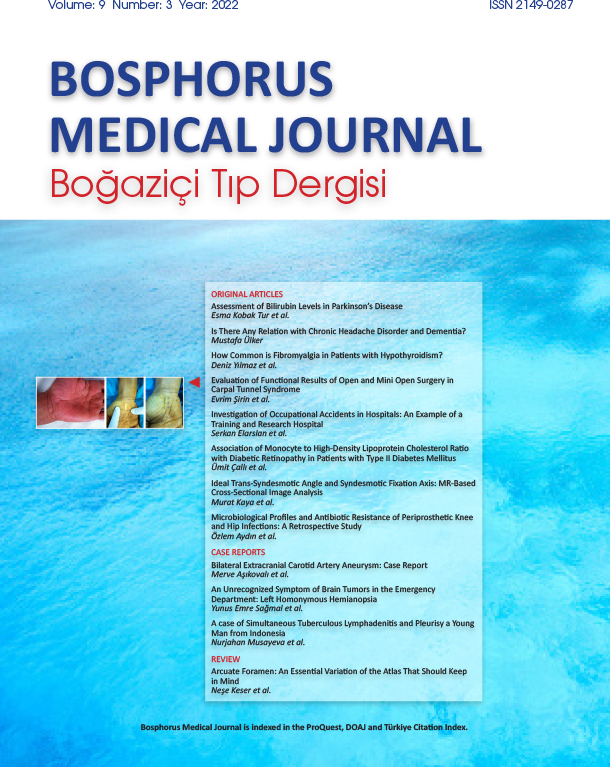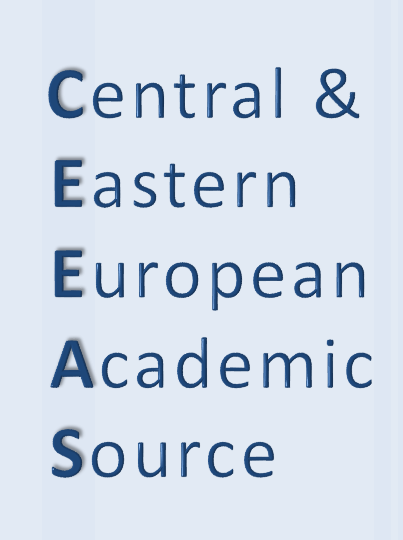The Most Common Etiologies in Young Cryptogenic Strokes and Their Relationship with RoPE Score
Leyla Ramazanoğlu, Beyza Karagöz, Işıl Kalyoncu AslanDepartment of Neurology, University of Health Sciences, Fatih Sultan Mehmet Training and Research Hospital, Istanbul, TürkiyeINTRODUCTION: This study was designed to determine the underlying etiologies and their relationship with the Risk of Paradoxical Embolism (RoPE) score in young cryptogenic stroke patients.
METHODS: In the study, among 1434 patients who were treated with a diagnosis of transient ischemic attack/ischemic stroke in our neurology clinic between May 2021 and May 2023, 121 patients between the ages of 18-50 were evaluated retrospectively. The demographic characteristics of the patients, past medical history, admission and 24-hour National Institutes of Health Stroke Scale (NIHSS) scores, infarct localization, hospital stay, and 90-day modified Rankin score (mRS) were evaluated. RoPE scores were calculated for 48 patients who had no history of chronic disease and were considered to have cryptogenic stroke according to the Trial of Org 10172 in Acute Stroke Treatment (TOAST) classification. The study protocol was approved by the hospital ethics committee (2023/84). Artificial intelligence was not used in the article.
RESULTS: The average age was 38.90, and 66.7% of the patients were male. The mean baseline NIHSS score was 4.65, and the most common stroke location (64.6%) was the MCA irrigation area. The most common etiology was Patent Foramen Ovale (PFO) with a rate of 37.5%. RoPE score was grouped as >7 and <7, and the relationship between TOAST etiology, NIHSS at admission and 24th hour NIHSS, duration of hospitalization, and Day 90 mRS and PFO closure was evaluated (p=0.381, p=0.509, p=0.447, p=0.591, p=0.884, p=0.500).
DISCUSSION AND CONCLUSION: In our study, the most common cause detected in patients with a RoPE score > 7 was PFO. No significant relationship was found between RoPE score and PFO closure. No significant relationship was found between causes other than PFO and RoPE score. Although it is thought that evaluation with the RoPE score may be effective in cryptogenic strokes, further studies are needed to detect etiologies other than PFO.
Genç Kriptojenik İnmelerde En Sık Görülen Etyolojiler ve RoPE Skoru ile İlişkileri
Leyla Ramazanoğlu, Beyza Karagöz, Işıl Kalyoncu AslanSağlık Bilimleri Üniversitesi, Fatih Sultan Mehmet Eğitim ve Araştırma Hastanesi, Nöroloji Anabilim Dalı, İstanbul, TürkiyeGİRİŞ ve AMAÇ: Bu çalışma, genç kriptojenik inme hastalarında altta yatan etyolojileri ve bunların Risk of Paradoxical Embolism (RoPE) skoru ile ilişkisini belirlemek için tasarlandı.
YÖNTEM ve GEREÇLER: Çalışmada, Mayıs 2021 - Mayıs 2023 tarihleri arasında nöroloji kliniğimizde geçici iskemik atak (GİA) / iskemik inme tanısı ile tedavi gören 1434 hasta arasından, 18-50 yaş aralığındaki 121i retrospektif olarak gözden geçirildi. Hastaların demografik özellikleri, geçmiş tıbbi öyküleri, başvurudaki ve 24. saat National Institutes of Health Stroke Scale (NIHSS) skorları, enfarkt lokalizasyonu, hastanede kalış süresi ve 90. gün modifiye Rankin skoru (mRS) değerlendirildi. Özgeçmişlerinde kronik hastalık öyküsü olmayan, Trial of Org 10172 in Acute Stroke Treatment (TOAST) sınıflamasına göre kriptojenik inme kabul edilen 48 hasta için RoPE skorları hesaplandı.
Çalışma protokolü hastane etik kurulu (2023/84) tarafından onaylandı.
BULGULAR: Yaş ortalaması 38.90 olup hastaların %66.7si erkekti. Başlangıç NIHSS skoru ortalama 4.65, en sık inme lokalizasyonu (%64.6) MCA sulama alanıydı. Etyolojide en sık %37.5 oranında Patent Foramen Ovale (PFO) saptandı. RoPE skoru >7 ve <7 olarak gruplandırılarak TOAST etyolojisi, başvurudaki NIHSS ve 24. saat NIHSS, hastanede yatış süresi ve 90. gün mRS ve PFO kapatılması arasındaki ilişki değerlendirildi (p=0.381, p=0.509, p=0.447, p=0.591, p=0.884, p=0.500).
TARTIŞMA ve SONUÇ: Çalışmamızda RoPE skoru >7 olan hastalarda en sık saptanan neden PFO idi. RoPE skoru ile PFO kapatılma arasında anlamlı ilişki bulunmadı. PFO dışındaki nedenler ile RoPE skoru arasında anlamlı ilişki bulunmadı. Kriptojenik inmelerde RoPE skoru ile değerlendirmenin etkili olabileceği düşünülmekle birlikte PFO dışı etyolojileri saptama açısından ileri çalışmalara ihtiyaç vardır.
Manuscript Language: English




















